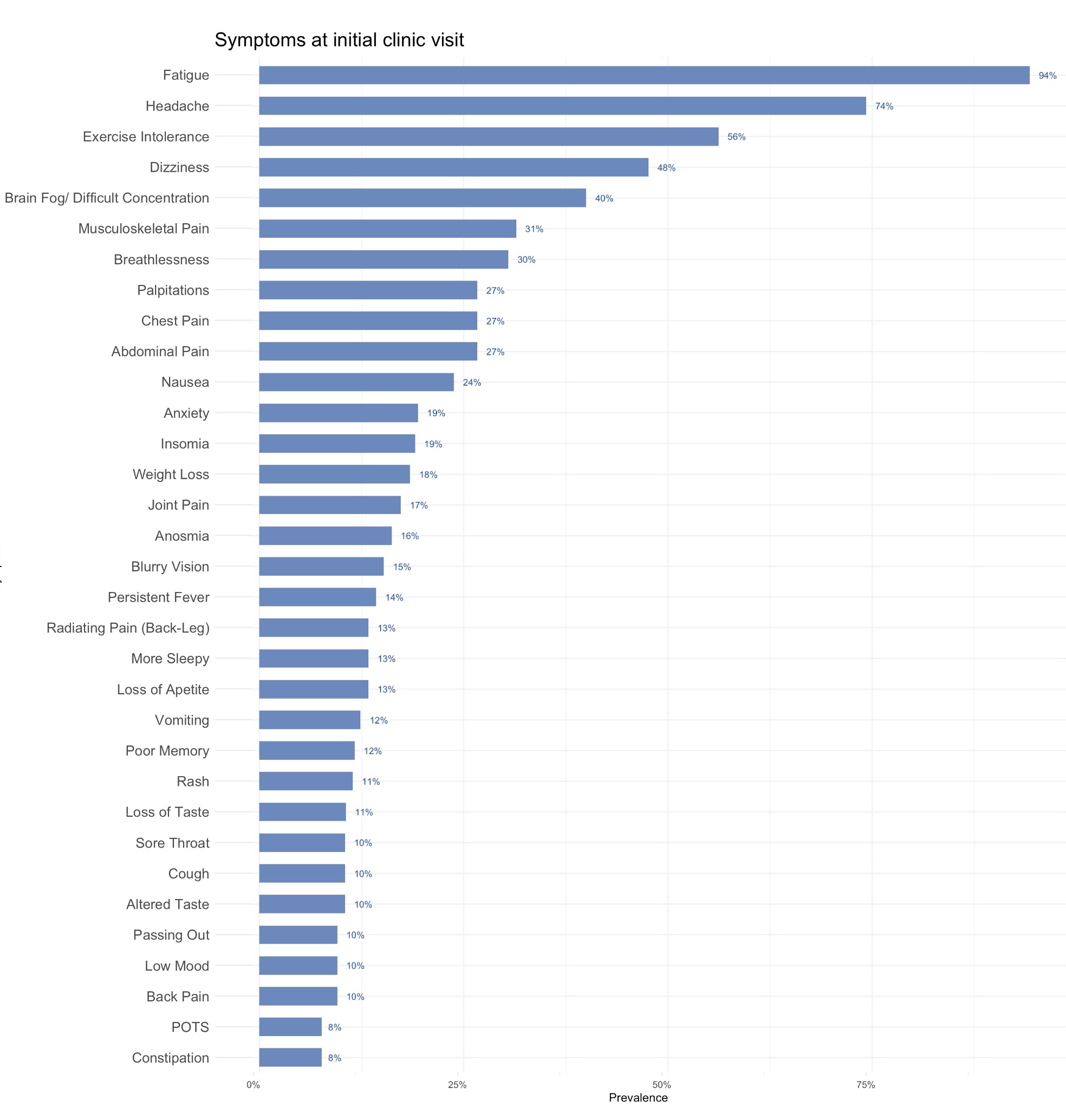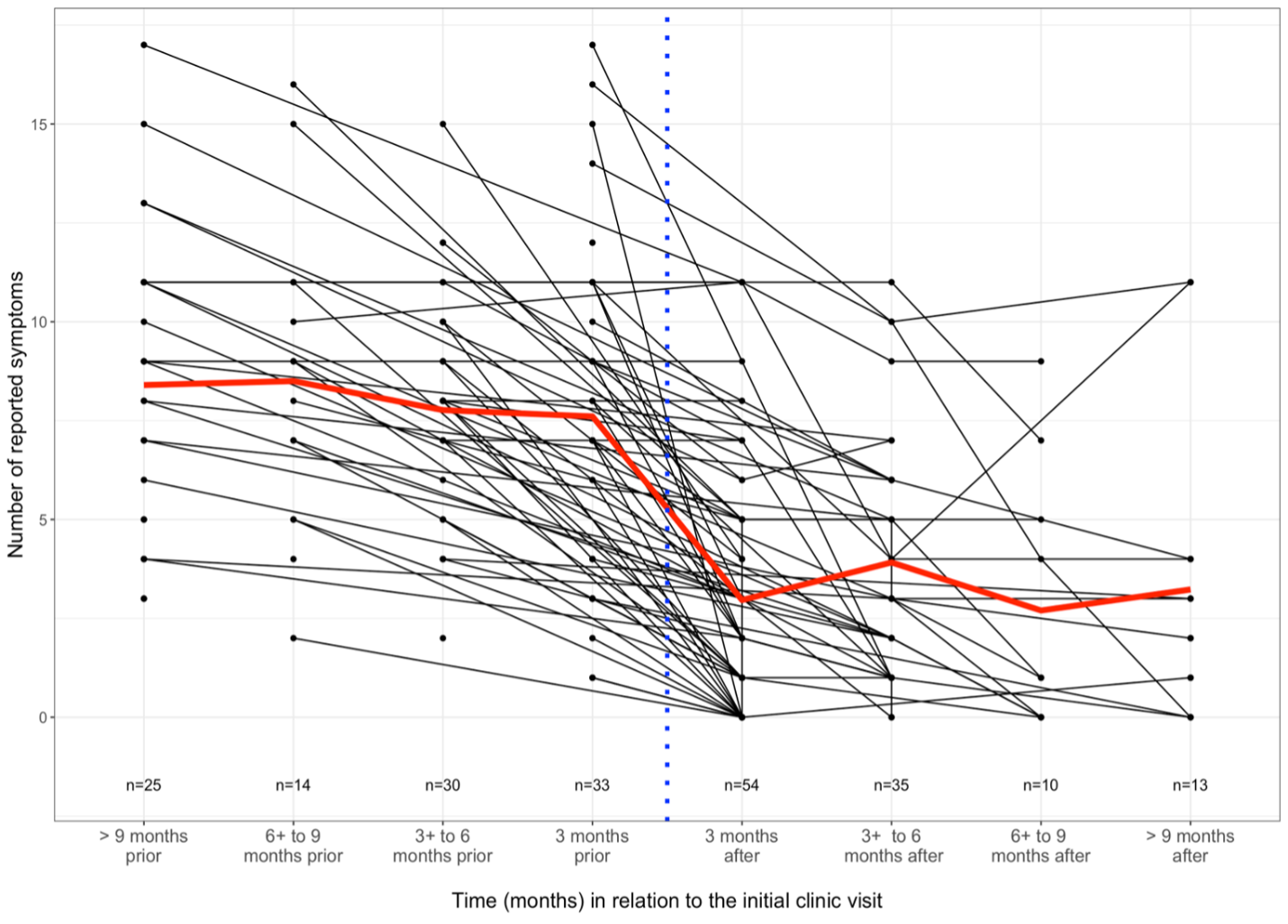Infectious Diseases
Session: Infectious Diseases 1
585 - Sex Differences and Symptom Burden Over Time in Children Seen in a Pediatric Long COVID Clinic.
Friday, May 3, 2024
5:15 PM - 7:15 PM ET
Poster Number: 585
Publication Number: 585.319
Publication Number: 585.319

Dina Kamel, MD (she/her/hers)
Infectious diseases fellow
CHLA
Covina, California, United States
Presenting Author(s)
Background: Long COVID describes a range of symptoms that continue or develop after acute COVID-19 and are not explained by an alternative diagnosis. Only a few studies evaluated long COVID in children but there is not enough data about its course, symptom burden, and changes over time. Long COVID is more frequently seen in adult females, however, there is no published data about gender differences in children.
Objective: To identify the symptoms of long COVID in children by gender. To determine its duration and course by addressing symptom burden over time.
Design/Methods: All children who were referred to the COVID Recovery Clinic at Children’s Hospital of Los Angeles from August 2021 to May 2023 were included. A retrospective chart review and prospective clinic follow-up visits were performed.
Results: We included a total of 105 patients, of whom 55 (52.4%) were males, and the mean age was 13 years (SD=3.9). Data regarding race and ethnicity were limited. On initial presentation to the clinic, the mean duration of symptoms was 28.2 weeks (SD=24.6). The most commonly reported symptoms were fatigue (94%), headache (74%), exercise intolerance (56%), dizziness (48%), brain fog (40%), musculoskeletal pain (31%), chest pain, palpitations, and abdominal pain (27%) (fig.1).
There was no significant difference in symptom duration between males and females (p= 0.9). Females had a significantly higher prevalence of brain fog (54% vs 27%, p=0.009), chest pain (36% vs 18%, p=0.048), dizziness (66% vs 31%, p< 0.001), exercise intolerance (68% vs 46%, p=0.03), palpitations (42% vs 13%, p< 0.001) and POTS (14% vs 2%, p= 0.026), however, males had a higher prevalence of loss of appetite (21.8% vs 4%, p=0.009) ) (fig. 2).
There is an overall decrease in symptom burden over time. The mean symptom burden in 25 patients who had symptoms > 9 months prior to the initial visit was 8.4 (SD=3.8) while the follow-up in 3 months showed a mean symptom burden of 3.0 (SD=3.2) in 54 patients. For consequent clinic follow-ups, the mean number of symptoms remained around 3.9 and 3.2 at 3-6 months and > 9 months respectively (fig. 3). Follow-up data is only representative of 74 patients who had at least one follow-up.
Conclusion(s): Long COVID is well-recognized in children. In our cohort, fatigue and headache were the predominant symptoms. Symptoms including brain fog, chest pain, palpitations, and POTS were more commonly reported in females. A decrease in the burden of symptoms was noted over time. Larger studies and longer prospective follow-ups are needed to best quantify and characterize symptom burden and duration of pediatric long COVID.

.jpg)

